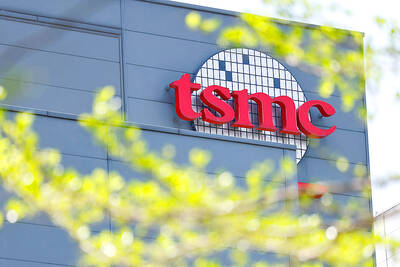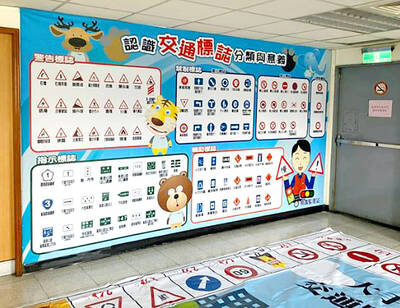The typical US nuclear family is more likely than the rest of the population to own cellphones, use the Internet and have multiple computers at home, a survey released on Sunday showed.
The survey of 2,252 adults between Dec. 13 and Jan. 13 by the Pew Internet and American Life Project compared cellphone and Internet usage in traditional nuclear families — a married couple with minor children — with other households such as those of single adults, homes with unrelated adults, or couples without children.
It found that 89 percent of traditional nuclear families own multiple cellphones and nearly half own three or more mobile devices.
Sixty-six percent of married-with-children households have high-speed broadband Internet connection at home, the survey found, well above the national average for all households of 52 percent.
It said both spouses and at least one child go online in 65 percent of married-with-children households and 58 percent of married-with-children households contain two or more desktop or laptop computers.
“Some analysts have worried that new technologies hurt family togetherness, but we see that technology allows for new kinds of connectedness built around cellphones and the Internet,” said Tracy Kennedy of the University of Toronto, one of the authors of the Networked Families report.
“Family members touch base with each other frequently with their cellphones, and they use those phones to coordinate family life on the fly during their busy lives,” she said.
The survey found that 42 percent of parents contact their child or children on a daily basis using a cellphone, making cellphones the most popular communications tool between parents and children.
It also found that going online was often a social activity. Fifty-percent of Internet users who live with a spouse and one or more children go online with another person at least a few times a week.
“Families are becoming networks,” said Barry Wellman of the University of Toronto, another author of the study. “Each household member can be her own communications hub and that changes things inside and outside the household.”
The survey found that TV watching was losing ground to Internet use.
Seventy-four percent of all adults said they watch TV nearly every day, but that figure fell to 58 percent among 18 to 29 year olds. Twenty-nine percent said they watch less TV because of the Internet.
As of 2005, 23 percent of US households were made up of married couples with minor children while 28 percent were made up of married couples without minor children.
Among the non-married, 9 percent were single-parent households and 26 percent of households comprised just one person. Other arrangements accounted for the remaining 13 percent of households.

EUROPEAN TARGETS: The planned Munich center would support TSMC’s European customers to design high-performance, energy-efficient chips, an executive said Taiwan Semiconductor Manufacturing Co (TSMC, 台積電), the world’s largest contract chipmaker, yesterday said that it plans to launch a new research-and-development (R&D) center in Munich, Germany, next quarter to assist customers with chip design. TSMC Europe president Paul de Bot made the announcement during a technology symposium in Amsterdam on Tuesday, the chipmaker said. The new Munich center would be the firm’s first chip designing center in Europe, it said. The chipmaker has set up a major R&D center at its base of operations in Hsinchu and plans to create a new one in the US to provide services for major US customers,

The Ministry of Transportation and Communications yesterday said that it would redesign the written portion of the driver’s license exam to make it more rigorous. “We hope that the exam can assess drivers’ understanding of traffic rules, particularly those who take the driver’s license test for the first time. In the past, drivers only needed to cram a book of test questions to pass the written exam,” Minister of Transportation and Communications Chen Shih-kai (陳世凱) told a news conference at the Taoyuan Motor Vehicle Office. “In the future, they would not be able to pass the test unless they study traffic regulations

GAINING STEAM: The scheme initially failed to gather much attention, with only 188 cards issued in its first year, but gained popularity amid the COVID-19 pandemic Applications for the Employment Gold Card have increased in the past few years, with the card having been issued to a total of 13,191 people from 101 countries since its introduction in 2018, the National Development Council (NDC) said yesterday. Those who have received the card have included celebrities, such as former NBA star Dwight Howard and Australian-South Korean cheerleader Dahye Lee, the NDC said. The four-in-one Employment Gold Card combines a work permit, resident visa, Alien Resident Certificate (ARC) and re-entry permit. It was first introduced in February 2018 through the Act Governing Recruitment and Employment of Foreign Professionals (外國專業人才延攬及雇用法),

‘A SURVIVAL QUESTION’: US officials have been urging the opposition KMT and TPP not to block defense spending, especially the special defense budget, an official said The US plans to ramp up weapons sales to Taiwan to a level exceeding US President Donald Trump’s first term as part of an effort to deter China as it intensifies military pressure on the nation, two US officials said on condition of anonymity. If US arms sales do accelerate, it could ease worries about the extent of Trump’s commitment to Taiwan. It would also add new friction to the tense US-China relationship. The officials said they expect US approvals for weapons sales to Taiwan over the next four years to surpass those in Trump’s first term, with one of them saying